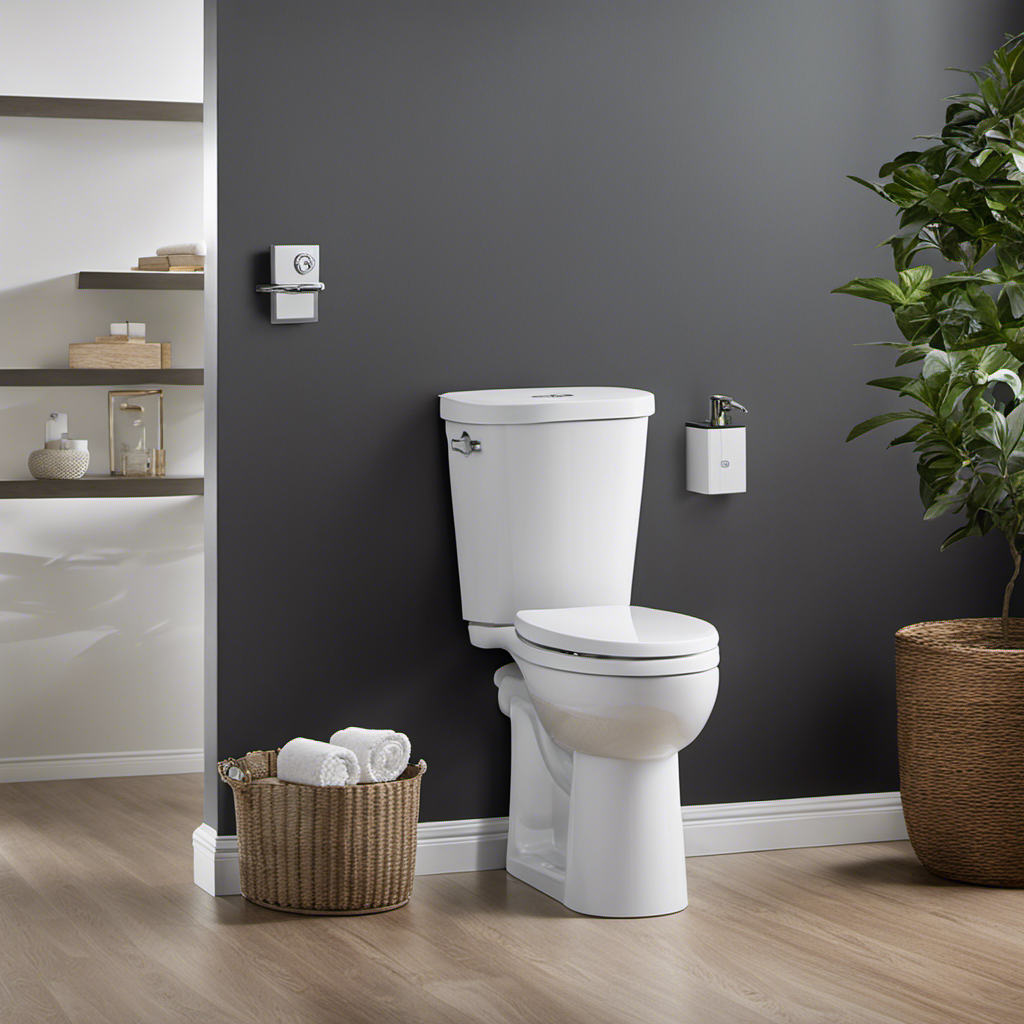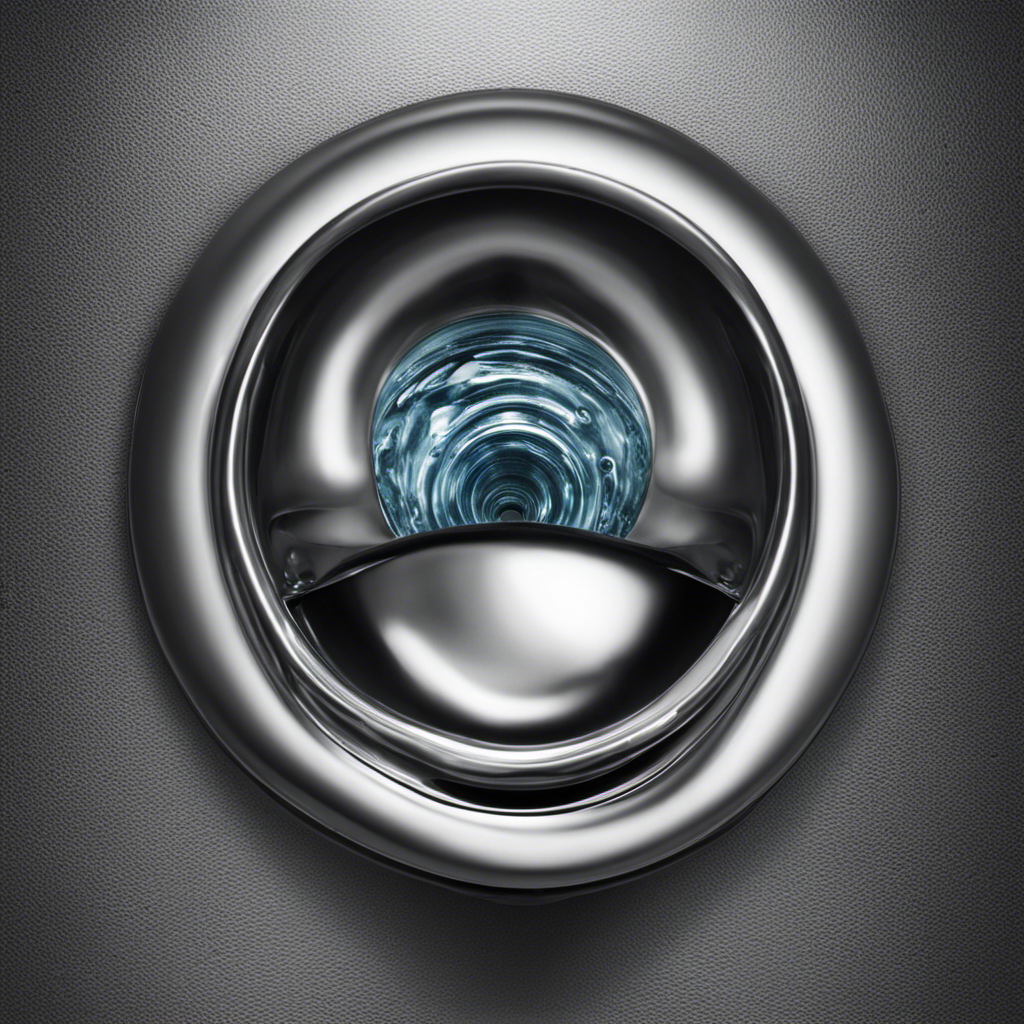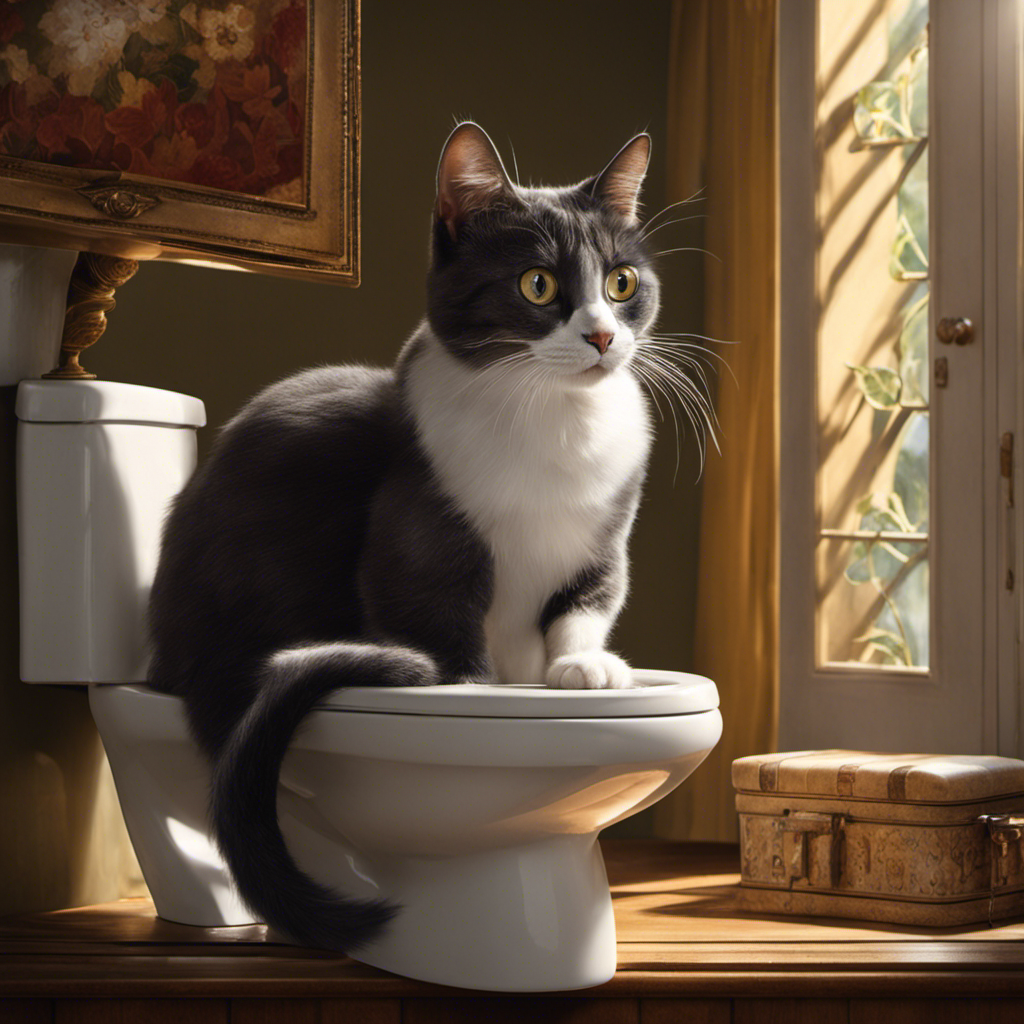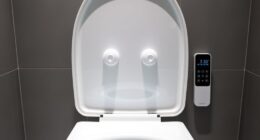Imagine standing in front of a toilet with a weak, trickling stream of water in the bowl, like a parched desert longing for rain. Frustrating, right?
Well, fear not, because I’m here to help you solve this problem and get more water in your toilet bowl.
In this article, I will guide you through practical steps to adjust the water level in the toilet tank, clean the refill tube, install a water-saving toilet flapper, clear any clogs, and even upgrade to a high-efficiency toilet model.
Let’s dive in and make your toilet experience a refreshing one!
Key Takeaways
- Adjust the water level in the toilet tank by turning the adjustment screw on the fill valve.
- Regularly check and clean the toilet bowl refill tube to ensure proper water supply.
- Install a water-saving toilet flapper to conserve water and improve flushing efficiency.
- Clear any clogs or blockages in the toilet trap using a plunger or toilet auger.
Adjusting the Water Level in the Toilet Tank
To adjust the water level in your toilet tank, you’ll need to locate the water level adjustment screw. This screw is usually located on top of the fill valve, which is the mechanism responsible for filling the tank with water after each flush.
To access the screw, remove the lid of the toilet tank and look for a small, plastic screw on top of the fill valve. By turning this screw clockwise, you can lower the water level in the tank, and by turning it counterclockwise, you can raise the water level.
If the water level adjustment screw doesn’t fix the issue, you may need to consider adjusting the float or even replacing the fill valve altogether.
Now, let’s move on to the next step of checking and cleaning the toilet bowl refill tube.
Checking and Cleaning the Toilet Bowl Refill Tube
Ensure that you’re regularly inspecting and maintaining the refill tube in your toilet bowl. The refill tube is responsible for supplying water to the toilet bowl after each flush, so it’s crucial to keep it in good condition for proper water flow.
If you notice a decrease in the water level in your toilet bowl or if it takes longer to refill, the refill tube may be clogged or damaged. To troubleshoot this issue, start by turning off the water supply to the toilet and removing the refill tube. Inspect it for any blockages or cracks and clean or replace it if necessary.
By ensuring the proper functioning of the refill tube, you can maintain the correct water level in your toilet bowl.
Now let’s move on to the next step of installing a water-saving toilet flapper.
Installing a Water-Saving Toilet Flapper
Now that we’ve covered checking and cleaning the toilet bowl refill tube, let’s move on to installing a water-saving toilet flapper. Replacing an old flapper can help improve the water efficiency of your toilet and prevent any flapper-related issues.
Here are some steps to help you install a new flapper:
-
Turn off the water supply: Locate the shut-off valve behind the toilet and turn it clockwise to stop the water flow.
-
Remove the old flapper: Disconnect the chain connecting the flapper to the flush handle and carefully remove the flapper from the overflow tube.
-
Install the new flapper: Attach the new flapper to the overflow tube, making sure it fits securely. Connect the chain to the flush handle, leaving a little slack.
-
Test and troubleshoot: Turn on the water supply and flush the toilet to ensure the flapper seals properly. If you notice any leaks or flushing issues, adjust the chain length or replace the flapper as necessary.
Installing a water-saving toilet flapper is a simple and effective way to conserve water and maintain the proper functioning of your toilet.
Clearing Any Clogs or Blockages in the Toilet Trap
Clearing any clogs or blockages in the toilet trap can be done using a plunger or a plumbing snake.
When faced with a clogged toilet, the first tool I reach for is a toilet plunger. To use a plunger effectively, I make sure there is enough water in the bowl to cover the rubber cup. I then position the plunger over the drain hole and push down firmly, creating a seal. With a strong upward and downward motion, I create suction to dislodge the clog.
If the plunger doesn’t do the trick, I turn to a toilet auger, also known as a plumbing snake. This tool is designed to reach deeper into the toilet trap and break up stubborn clogs. By inserting the auger into the drain and rotating the handle, I can clear any blockage that the plunger couldn’t handle.
Upgrading to a High-Efficiency Toilet Model
If you want to save water and reduce your environmental impact, consider upgrading to a high-efficiency toilet model. These toilets are designed to use less water per flush, making them a great choice for conserving water in your home.
Here are four reasons why upgrading to a high-efficiency toilet is a practical and eco-friendly choice:
-
Water saving toilet design: High-efficiency toilets are specifically designed to use less water without sacrificing performance. They use advanced flushing technology to effectively remove waste with less water.
-
Dual flush toilet options: Many high-efficiency toilets offer dual flush options, allowing you to choose between a full flush for solid waste and a partial flush for liquid waste. This flexibility helps you further conserve water by using only what is necessary for each flush.
-
Cost savings: By using less water, high-efficiency toilets can significantly reduce your water bills over time. This makes them not only good for the environment but also for your wallet.
-
Environmental impact: By upgrading to a high-efficiency toilet, you can make a positive impact on the environment by conserving water. This is especially important in areas with water scarcity or during drought conditions.
Considering these benefits, upgrading to a high-efficiency toilet is a practical and effective way to save water and reduce your environmental footprint.
Frequently Asked Questions
How Can I Determine if the Water Level in My Toilet Bowl Is Too Low?
To determine if the water level in my toilet bowl is too low, I can visually check if the water is below the normal level. If it is, I can adjust it using these methods.
What Are Some Common Reasons for a Toilet Bowl Not Filling up With Enough Water?
When the toilet bowl water level is too low, it can be frustrating. There are several common reasons for this issue, such as a faulty fill valve or a clogged water supply line. Troubleshooting is essential for resolving the problem.
Is It Possible to Increase the Water Level in My Toilet Bowl Without Adjusting the Water Level in the Tank?
To troubleshoot low water level in the toilet bowl, adjusting the fill valve can help increase the water level. It’s possible to do this without altering the water level in the tank.
Can a Faulty Refill Tube Affect the Water Level in the Toilet Bowl?
A faulty refill tube can definitely affect the water level in the toilet bowl. I once had a similar issue where the tube was leaking, causing the bowl to not fill up properly. Regular maintenance is important for troubleshooting common toilet issues.
Are There Any Alternative Methods to Increase the Water Level in the Toilet Bowl Besides the Ones Mentioned in the Article?
There are alternative methods to increase the water level in the toilet bowl. It is important to consider the pros and cons of adjusting the water level in the tank before trying any of these methods.
Conclusion
In conclusion, by following these steps, you can easily get more water in your toilet bowl.
- Adjusting the water level in the tank
- Checking and cleaning the refill tube
- Installing a water-saving toilet flapper
- Clearing any clogs or blockages in the trap
- Upgrading to a high-efficiency toilet model
All of these are effective ways to achieve this. While some may worry about the cost and effort involved in upgrading to a new toilet, it is important to remember that the long-term benefits, such as water conservation and lower utility bills, outweigh any initial concerns.
So don’t hesitate to take these actions and improve the water level in your toilet bowl today!










